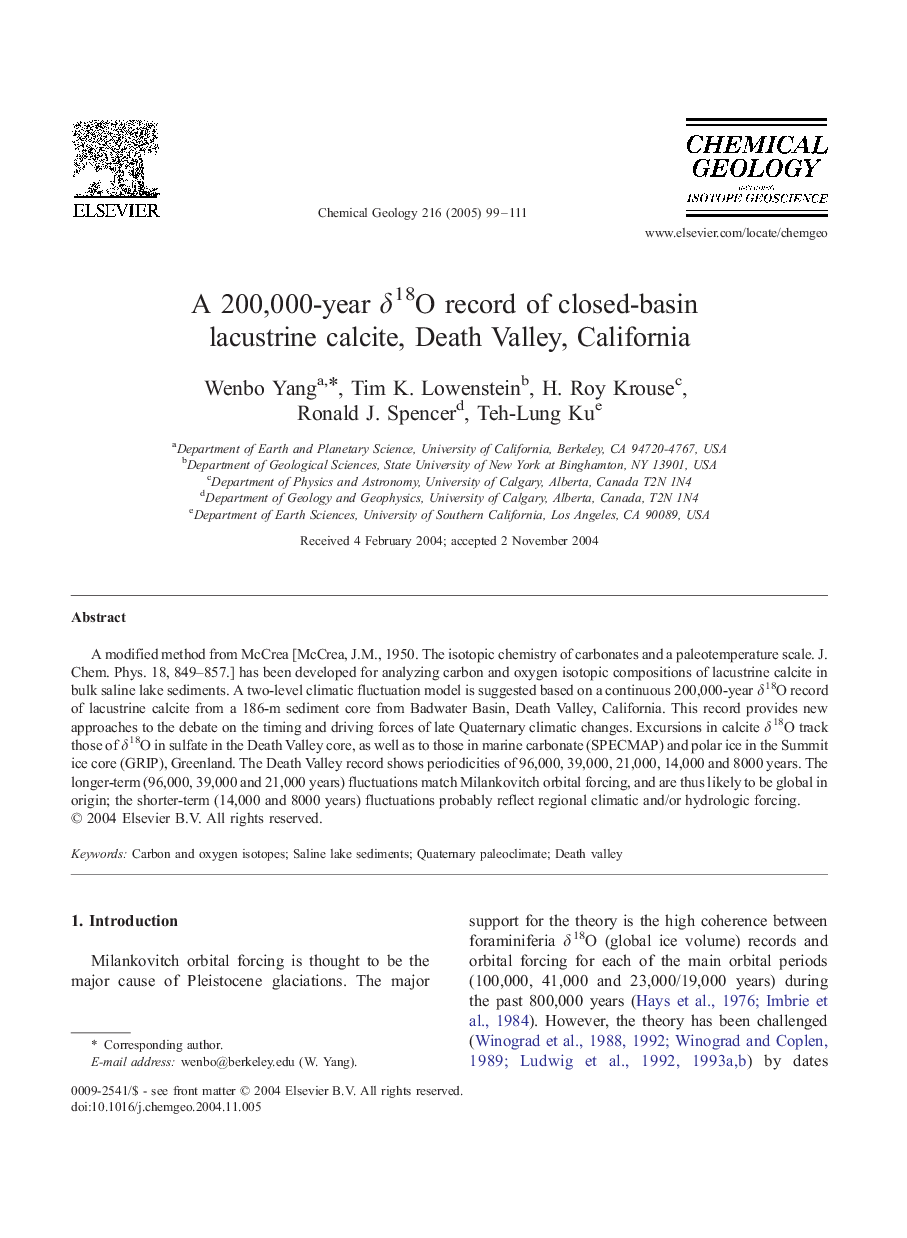| Article ID | Journal | Published Year | Pages | File Type |
|---|---|---|---|---|
| 9529127 | Chemical Geology | 2005 | 13 Pages |
Abstract
A modified method from McCrea [McCrea, J.M., 1950. The isotopic chemistry of carbonates and a paleotemperature scale. J. Chem. Phys. 18, 849-857.] has been developed for analyzing carbon and oxygen isotopic compositions of lacustrine calcite in bulk saline lake sediments. A two-level climatic fluctuation model is suggested based on a continuous 200,000-year δ18O record of lacustrine calcite from a 186-m sediment core from Badwater Basin, Death Valley, California. This record provides new approaches to the debate on the timing and driving forces of late Quaternary climatic changes. Excursions in calcite δ18O track those of δ18O in sulfate in the Death Valley core, as well as to those in marine carbonate (SPECMAP) and polar ice in the Summit ice core (GRIP), Greenland. The Death Valley record shows periodicities of 96,000, 39,000, 21,000, 14,000 and 8000 years. The longer-term (96,000, 39,000 and 21,000 years) fluctuations match Milankovitch orbital forcing, and are thus likely to be global in origin; the shorter-term (14,000 and 8000 years) fluctuations probably reflect regional climatic and/or hydrologic forcing.
Related Topics
Physical Sciences and Engineering
Earth and Planetary Sciences
Geochemistry and Petrology
Authors
Wenbo Yang, Tim K. Lowenstein, H. Roy Krouse, Ronald J. Spencer, Teh-Lung Ku,
